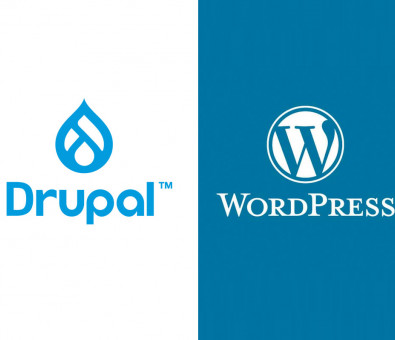Why did we choose Drupal as Content Manager (CMS)?
Giampaolo De Martiis
Bogota Colombia
September 18, 2021
The Relevance of Drupal in the World
The relevance of Drupal® is evident in different regions and industries. It is worth highlighting some of the main developments by segment:
- Government: Australia, New York City, City of London, NASA, Department of Commerce (USA)
- Media: The Economist, BBC, Entertainment Weekly, Pinterest.
- Technology: RedHat, Alcatel, Lucent, Verizon
- Entertainment: Warner Music, NBC, Turner.
- Electronic Commerce & Retail: eBay, Whole Foods, Puma, Tesla.
- Universities: Harvard, Stanford
Drupal® Features
Drupal ® offers a series of technical benefits compared to other CMS, which are focused on highly complex web portals with a high level of traffic and user management.
Being mobile-first, it is oriented towards navigation and performance on mobile devices, as well as the implementation of websites with fluid behavior on desktop devices.
The security component is one of the most reliable on the market thanks to the team that supports the revisions of the modules and the kernel, as well as the wide community of developers that, day by day, contribute to the construction and stability of the CMS.
The complementary modules to achieve advanced functionalities in the Portal are steadily integrated with each other to generate a robust site construction, and not have small, isolated solutions
Drupal® Detailed Features
- a. Basic Features
Drupal® is a free, modular, multipurpose and highly configurable content management system or CMS (for its acronym in English: Content Management System) that allows you to publish articles, images, files while also offering the possibility of other added services such as forums, polls, voting, blogs, user management and permissions.
With this, Drupal® is a dynamic system: instead of storing its contents in static files on the server's file system in a fixed way, the textual content of the pages and other settings are stored in a database and edited using a web environment.
- b. Licensing Model
It’s a free program, licensed under the GNU/GPL, written in PHP, able to combine with MySQL, and developed and maintained by an active community of users. It stands out for the quality of its code and the generated pages, the respect for web standards, and a special emphasis on the usability and consistency of the entire system.
Therefore, this technology does not represent the cost of licensing for the client.
- c. Reasons to migrate to Drupal®
- Easy to use: This version has a totally renewed administration interface, which makes daily tasks easier to find and perform. Lots of improvements have been added for site builders and content editors.
- Flexible: The platform allows you to define your own content structure and add custom fields to top users.
- Scalable: Portals in Drupal are fast and can respond and handle large amounts of traffic thanks to improved Javascript and CSS optimization, better cache management and more. This is critical to support high traffic.
- Open Source: Thousands of smart, productive people work together to continually improve Drupal, its modules, templates, and distributions, allowing to leverage it in the evolutionary development of the community
- Flexible content: Custom fields can be defined which are used in content types, users, comments, terms, and other entities. The data in these fields can be stored in SQL, NoSQL, or remote storage.
- Better template design: You can control exactly what is displayed on the screen with the new Render API and some drastic hooks for modifications. The new RDF module provides a semantic markup for the web.
- Accessible: The administration screens are now much more accessible (Drupal® 8). Numerous interface improvements make it easy for you to build highly accessible web pages.
- Images and files: Support for images in content is now built into the kernel. Different versions can be generated for thumbnails, previews, and other image styles. Now it is possible to use private and public file management at the same time.
- Automated Code Testing: A new automated testing environment, with over 30,000 tests included, enables continuous integration testing of all patches to Drupal core and contributed modules.
- Improved Database Support: A new database abstraction layer provides support for SQLite, MySQL/ MariaDB, and PostgreSQL out-of-the-box. You can install contributed modules to use MS SQL Server, Oracle, and more.
- Better support for distributions: It has installation profiles to distribute custom products, based on Drupal®. A new API and exportable configuration allow you to capture more options in code.
- Extend: Thanks to a huge community effort, more than 800 modules are available or under active development for Drupal®, including Views, Pathauto, and WYSIWYG, with many more on the way to being updated every day.



